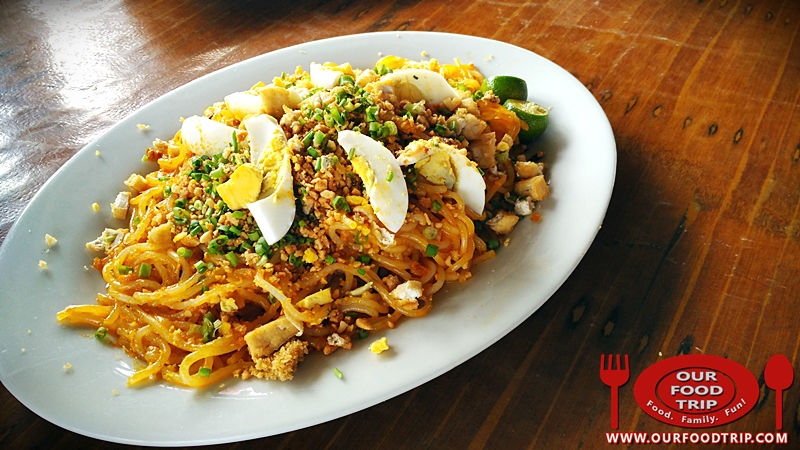Living in Rizal for almost a decade now, we seldom visit Cavite, let alone, go on a food trip in the province. So when Island Cove Hotel and Leisure Park in Kawit invited me to try their new menu, I was ecstatic to give it a go! I am not really familiar with the specialties of the province but I was sure that it would not only taste good but colored with the Cavite’s rich heritage. And this is precisely what Island Cove’s “Taste Cavite” menu would like to showcase to its patrons. Every Friday, Saturday, and Sunday starting November 18 and daily starting December 22, 2016, this special menu will be available at the hotel’s Fishing Village.

So, are you ready to go on a virtual Cavite culinary tour with me? Let’s begin…

We start our tour of Cavite in Kawit where Island Cove is located. Mutya ng Cavite (Php 600) is the Pinoy version of bouillabaisse, as Executive Vill Purificacion explains. It’s originally from the old 7 Sisters Restaurant owned by the Sabater Family of Marulas, Kawit. The creamy soup consists of mussels, crab, clams, and shrimps. I totally understand how it became Island Cove Hotel and Leisure Park Managing Director, Gilbert Remulla’s personal favorite.
Pancit Kawit (better known as Pancit Pusit) is cooked in squid ink giving it a dark shade. It is then topped with squid rings, grated green mangoes, and scallions.

Another noodle dish from Kawit is the Pancit Puso that uses a combination of bihon and miki bihon noodles cooked in achuete with small slices of pork and thinky sliced green beans, carrots, cabbage, and thinly sliced banana blossom. I liked how it tasted because it is already cooked with vinegar, thus, there will be no need to add calamansi juice after.

Last dish on our visit to Kawit is the Afritadang Gulay na may Baboy. It’s stir-fried vegetable with sweet potatoes, pechay, bell peppers, and sauteed pork. A hearty ulam that can be perfectly paired with rice.

Next, we go to Bacoor by tasting its specialty, the Tahong Chips. These are mussels that were dried, mixed with flour and spices, then deep-fried. I’ve tasted these before when a friend brought me a bag as pasalubong but, I must admit, Island Cove’s version tasted better especially when dipped in its special suka.

Meanwhile, Cavite City proves to be a foodie haven with four authentic Caviteño culinary delights. The funny-sounding Fried Lawlaw has become our group’s personal favorite because, like the tahong chips, it’s just like eating chicheria. Chef Vill said that the Lawlaw comes from the Herring family and it’s so hard to fillet the small fish that only one restaurant in the town has been doing it since 1800s.

Another fish dish from Cavite City is the Spanish-influenced dish called Bacalao. Dry-salted labahita (surgeon fish) is flaked and cooked with vegetables, Spanish chorizo, and garbanzos in anatto oil. I can imagine eating it with fried rice and sunny-side up eggs on a lazy Sunday morning. So yum!

For soup-lovers, Cavite City presents Calandracas which is made with carrots, potatoes, cabbage, chickpeas, chicken gizzard, chorizo, and macaroni noodles boiled in ham stock and seasoned with Patis Tanza.

And surprisingly, Cavite City also has its own version of Tamales, which is a popular Pampangeño delicacy. Back in the days, farmers bring tamales as baon for lunch because it’s already a complete meal. The steamed dish is made of galapong (glutinous rice flour) mixed with corn meal, chicken, pork, and salted egg, then wrapped in banana leaves.

Our next stop on this culinary tour is General Trias. This time, we become acquainted with their version of the Valenciana. The dish is similar to the Spanish paella with chorizo de Bilbao, chicken, and pork, but cooked in coconut milk. It’s reddish than the Valenciana I know that my Ilonggo relatives cook but it’s as delish!

Another surprising discovery of the day is the Pancit Malabon that is originally from General Trias as the townsfolk would say. Back in the Spanish era, General Trias was known as San Francisco de Malabon. Thus, their specialty which is made of glass noodles, shrimps, tinapa (smoked fish) and eggs mixed with shrimp sauce and topped with chicharon became known as Pancit Malabon.

And finally, we go to Imus by tasting its especially unique Adobong Imus. While most Adobo dishes are cooked with soy sauce, the town’s version is instead slow-cooked in vinegar, annatto oil, bay leaves, and salt and pepper.

Imus is also the source of the Kakanin (Kutsinta, Sapin-sapin, and Puto).

Photo is just a personal plate.
Did you enjoy the tour? You can visit all of these towns of Cavite while having a fill of their different delicacies while seated inside one of Fishing Village’s bamboo huts standing on water and facing Manila Bay. You know what? If you have balikbayan friends or relatives coming over for the holidays, this will be the perfect place to bring them to. And all it takes is a quick drive through the Manila-Cavite expressway, 20 minutes away from the SM Mall of Asia.
Island CoveHotel and Leisure Park is located in Binakayan, Kawit, Cavite. For more information, log on to www.islandcovephil.com, call (046) 434-0210, or email inquiry@islandcovephil.com. Follow Island Cove Hotel and Leisure Park on Facebook (fb.com/IslandCoveHotelandLeisurePark), and Instagram or Twitter (@islandcovephil) to be updated on their latest promos.
View the rest of our photos on our Facebook page: fb.com/OurFoodTrip. Follow us, too, on Instagram (@ourfoodtrip).
Like my post? CLICK HERE to receive my latest posts via email.


 Follow
Follow


Recent Comments